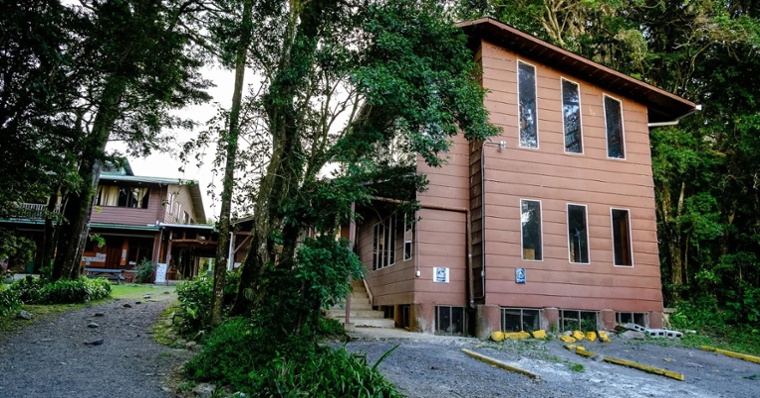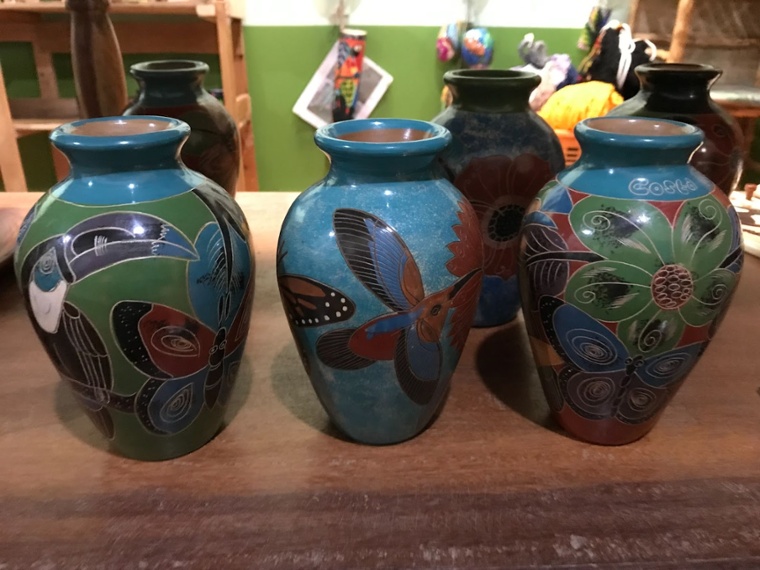A History of Monteverde, Part 1

The Founding of Monteverde. I live in paradise. It is truly heavenly in more ways than I can count. Monteverde is not only breathtakingly beautiful and strategically adapted for people to see it in all its splendor, but it is also a sustainable and supportive society. Here I feel incredibly safe. The community sense is powerful, and although I thoroughly enjoy my solitude, I am never truly alone.
If you've read some of my other blog posts, you already know that I am a retired naturalist tour guide and a digital nomad who somehow ended up living in Monteverde during the 2020 lockdown.
I had been to Monteverde many times, but once I started to live here, the place has managed to surprise me almost every day.
I am also a history buff enjoying medieval and ancient history as much as watching birds or hiking in the multiple trails of my beautiful country. For me, history is the answer, not only to the past but to our future. Knowing our history is knowing ourselves and understanding how the process of life evolves and flourishes.
I made this rather lengthy account of all the facts and events that turned Monteverde into an exceptional place and a path to follow for many communities on the planet. As it can teach us all a lot and thus, change our future.
The history of Monteverde is a turning point for Costa Rica. It started as the seed of a powerful, honest, and very conscientious, peaceful, and sustainable project that now involves the whole country and goes beyond our borders. The contribution of this little town and community to the World's environmental policies and the education of the Costa Rican generations is impossible to measure.
However, we cannot understand the history of Monteverde without seeing, first, at least a summary of the history of Costa Rica. As it usually happens, the context defines the story.
First, The History of Costa Rica
First, we have to understand Costa Rica geographically. Yes, we could say we all know where it is on the map, but do you know the real meaning of being in the center of it all? Costa Rica is between two substantial continental masses and two very different oceans whose climates clash across our mountains and valleys. With altitudes that reach 12,000 feet high above sea level, Costa Rica, the Northern part of Panama, and the Southern area of Nicaragua were the last parts of the continent to emerge.
More than a hundred million years after the formation of the continents, an archipelago of volcanic islands began to erupt between South America and North America, forming a bridge that changed the World climate forever and its landscape. This sudden appearance of land between the two continental masses also turned into a grand highway filter, as many species started migrating North and South. Many of these migrating species stayed and found homes in the many different life zones and microclimates in Costa Rica with its different elevations, terrain, and meteorological conditions.
These climatic circumstances created the breathtaking biodiversity that we all boast about here. However, for this to happen, the territory was as tropically wild as a place can be. Not only with tremendous pouring rains and harsh dry conditions depending on the season but with very broken mountains and swarms of mosquitoes. And so, when humans arrived, they went through Costa Rica, and very few stayed.
From the early Precolombian times to the colonial days, Costa Rica was the most forgotten place in the Neotropics. It was simply too wild.
Guayabo National Park. Picture by Lutz Maertens, CC BY-SA 3.0
When the Spaniards arrived, they found a small native population with many different ethnicities. Some of them came from Mexico, some of them were significantly influenced by the South American traditions, but societies were small. There were no big cities, pyramids, or significant stone buildings, just a tiny population that somehow survived in hostile conditions.
Colonial Times in Costa Rica
Christopher Columbus came to Costa Rica on his fourth trip in 1502. He wrote a letter to King Ferdinand stating that he had found the "Richest Coast." I must add that Columbus never knew about the existence of Mexico or Peru, the actual wealthiest areas of the Americas. Therefore the little that the native population had to show off impressed him. Or so it seems.
But in the end, Spaniards also found very little gold, no precious stones— nothing really that made it attractive to the crown. The 'Rich Coast' was just a rough and impoverished remote province of the Guatemala Kingdom in the Spanish Empire.
And although we had a coast in the Caribbean, it was so wild that it was impossible to go across.
Far away, remote, hostile. It was the perfect place to hide, mainly from the Spanish Inquisition, but from governments, injustice, war, you name it! Of course, there were churches and Spanish authorities in the region, but they were concentrated in a few small colonial villages scattered in the thousands of miles of rainforests. Outside of the eastern side of the Central Valley, Costa Rica was a vast realm of forests where people could come and live in peace.
We don't know the number of people that lived hidden and dispersed throughout the country. However, in the XVIII Century, the Catholic church decided to start pushing the people to move to the center of the country. Eventually, that push turned to a shove, as they scaled to more aggressive ways to convince the people, like burning their houses and taking their wives and children to the new settlement in the center of Costa Rica: San Jose.
Life in Early Costa Rica
In the colonial days and Costa Rica, everyone was poor. Even the rich were poor.
And although there was the same sad violence of the conquest and colonization as in the rest of the region, and a vast part of the original population died, a lot of the indigenous population also mixed with the Spaniards.
In Costa Rica, the poor and the rich have always been together in the same classroom, the same old cantina, and the same tiny church. They both walked through mud, and they both had to work very hard.
And so, Costa Rica walked a different historical path than its neighbors, constantly embedded in wars. Somehow, throughout time, and in all their tragic isolated and hard-working circumstances, Costa Ricans lived in peace, even from the very start.
When Costa Rica finally won its independence (we found out about it about a month after it happened), our first chief of state was a school teacher.
And throughout the years' Costa Rica evolved almost without any military conflicts, local or international. You will find very few dictators, a couple of scuffles with Nicaragua and Panama. And our only actual international conflict was back in 1856, in defense of the national territory from an invader that came from Nashville, Tennessee: "an enterprise is then known as "filibustering."
William Walker usurped the presidency of Nicaragua from 1856 to 1857 and waged war on Costa Rica. (3) But through the bravery and unity of the people, he was eventually expelled by the allied Central American countries. This is probably our only "real" international conflict throughout history.
From the 1900s, Onward
In 1882, Costa Rica opened an entrance gate and port in the Caribbean, starting a different progressive era with banana production and coffee exportation to Europe.
Through the late 19th Century and into the early 1900s, the people of Costa Rica started to move out of the Central Valley. Progress was slow but supported by the government, who gave out the land for those who wanted to work it.
The area known as Monteverde was taken by several families who were survivors of the harsh conditions. Some were legal owners, some squatters. Many came to work in the gold mines that existed in the area long ago.
That changed mid Century. In 1948, Costa Rica had its 20th Century Civil War. Provoked by possible electoral fraud and an emerging dictatorship, a group of Costa Ricans went up in arms. After a bloody conflict that lasted a month, the dictator fled, and the people once again took over the government.
The insurgent group had been led by an extraordinary (yet polemic) man called Jose Figueres (a.k.a. Pepe Figueres), who, after eight months in power, decided that Costa Rica needed to reinforce its education, housing, and health.
And more importantly, Costa Rica decided that it did not need an army or its costly, negative expenses. On December 1st, 1948, the Costa Rican government happily abolished its army forever. It was a bold decision to take amidst the Cold War. However, it proved to be genius and a founding pillar of Costa Rican culture.
Now, talking about Monteverde:
The next video is part of the usual speech that Marvin and Flory Rockwell gave to the tourists in Monteverde, talking about their incredible journey in the cloud forests of Costa Rica:
History Video told by Marvin Rockwell
The Quaker Settlement at Monteverde
While all of this was happening in Costa Rica in the U.S., the Korean War neared, and Congress opted to restore the draft, a measure that required young men to register for military duty.
Consequently, dissatisfied with the rising military industry in the United States, the Meeting of Friends (Quakers) in Fairhope, Alabama, determined that they could not stay in the country and contribute to the war effort. Four of the group's young men were sentenced to a year in prison in 1949 for refusing to register for the draft as conscientious objectors. They were released after four months, and in November 1950, these four men, along with forty-four Quakers, consisting of eleven families, departed their northern homes for Costa Rica.
They chose Costa Rica mostly because it was close to the United States and had great weather, agricultural potential, and a beautiful environment. They had also read the remarks of Pepe Figueres, Costa Rica's president at the time. Figueres invited outsiders to come and help develop the country. Perhaps most appealing to the Friends was that Costa Rica had recently dissolved its army, and these pacifists believed they could thrive here.
Quakers find Monteverde
The Quakers resided in San Jose for six months while searching Costa Rica for a suitable location to create their colony. Eventually, they have presented this plot of land spanning the Continental Divide, where a few Costa Rican (tico) families were homesteading.
The Quakers purchased 1400 hectares (approximately 3500 acres) of land above the tiny settlements of Cerro Plano and Santa Elena, buying from the Guacimal Land Company and locals, many of whom just relocated to other holdings nearby.
Immediately, the Quakers divided the property into separate family farms, reserving a considerable portion for communal needs such as their school and Meeting House and their first effort at a sustainable company, the Monteverde Cheese Plant. Many of these Quakers were not farmers in Fairhope, so this was an exciting experience to discover the territory, clear the land, learn about dairy, and find solutions for their new cheese business.
Quaker Forest Protection
In a forward-thinking move, the Quakers opted to maintain the forest on the high slopes at the top of the mountain from whence the streams flowed, giving the water the community relied on for many parts of their lives.
They put approximately a third of the area, 554 hectares (1300 acres), in reserve named The Watershed Property and cared for it cooperatively, keeping the boundary lines clear and evicting illegal squatters before they deforested or made a claim. This would be one of Costa Rica's very first private reserves.
The Quakers gladly cut trees to create pastures on their farms. However, they promised not to cut the forest in the Watershed Property, realizing the importance of safeguarding the Guacimal River's headwaters. When driving through the lowlands below Monteverde during the dry season (February through April), the Guacimal River is often the only flowing river.
In many ways, this first conscious decision was the start of a grand spirit of sustainability.

Monteverde Cheese Factory
As the way in and out of Monteverde could only be made by horse (or a very, very dedicated driver), the Quakers realized that selling the milk was not a possibility. Instead, the founding Quaker families had to learn everything from correct milking procedures to safe milk storage and processing to the skill of creating different types of cheese.
After the Quakers established their process, they invited local Costa Rican dairy farmers to join. Eventually, the plant had more Ticos than Quakers as suppliers and employees, and it was sold to a Mexican food giant, Sigma, in 2013.
The cheese factory the community set up produced 350 pounds of cheese in its first batch. Today the factory produces 8,000 pounds in one day.
A lot of progress!

The Monteverde Friends School
But economic development wasn't all the Quakers brought.
When the Quakers arrived on the mountain, they established the Monteverde Friends School, where children were educated in an environment promoting Quaker beliefs. They worked hard to provide a firm intellectual foundation, emphasizing the search for truth and the values required to contribute to a peaceful, sustainable, and just community.
These values and beliefs in a possible peaceful, sustainable, and diverse society have been taught to the children of Monteverde and influence the town's culture to this day.
Even now, with several public schools and a thriving community throughout the different neighborhoods of Monteverde, the base of this warm and joyful community draws a great deal from that Quaker foundation.
Next week, I'll continue addressing how the values of the founding Quakers, as well as the rise of Costa Rican tourism, led to the Monteverde we know today. I'll also explore the future that lies ahead for this beautiful part of the country.

Travel + Leisure. "The World's Most Pristine Forests." Travel + Leisure. n.d. Web. November 9th, 2021. https://www.travelandleisure.com/trip-ideas/nature-travel/the-worlds-most-pristine-forests
Monteverde Cloud Forest Biological Reserve -. "Monteverde Cloud Forest - Monteverde Cloud Forest Biological Reserve." Monteverde Cloud Forest Biological Reserve -. 13 Jan. 2021. Web. November 9th, 2021. https://cloudforestmonteverde.com/cloud-forest/
(3) Wikipedia Contributors. "William Walker (filibuster)." Wikipedia, the Free Encyclopedia. Wikimedia Foundation, n.d. Web. November 9th, 2021. https://en.wikipedia.org/wiki/William_Walker_(filibuster)
Presidencia de la República de Costa Rica. "Comunidad de Monteverde convierte la amenaza de COVID-19 en oportunidad para fortalecer su organización." Presidencia de la República de Costa Rica. 18 Apr. 2020. Web. 10 Nov. 2021. https://www.presidencia.go.cr/comunicados/2020/04/comunidad-de-monteverde-convierte-la-amenaza-de-covid-19-en-oportunidad-para-fortalecer-su-organizacion/
Monteverde Fund. "Our Story | Monteverde Community Fund." Monteverde Fund. n.d. Web. 10 Nov. 2021. <https://www.monteverdefund.org/our-story>






.jpg)